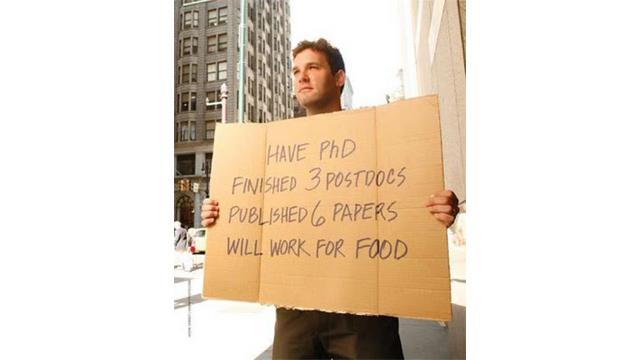
This crisis is not going away. Officially begun late in 2007, nearly five years later, no end is in sight. Trillions in government-funded bailouts and interventions failed to do the trick. The private sector's hyped resilience disappeared. "Recoveries" proved weak, uneven and short-lived. The president who rode the crisis into power risks being ridden out by its persistence.
It is difficult to imagine and impossible to count all the costs of this persistence. Consider, just for examples, (1) damaged physical and mental health of the unemployed, (2) rising anxiety about increasingly insecure jobs and benefits, (3) strained and destroyed relationships, (4) interrupted or aborted educations and (5) lost skills and job connections. Consider, too, the gross inefficiencies (tens of millions of unemployed alongside trillions in unused raw materials, tools, equipment, offices, factories and stores; millions of empty homes alongside millions of people rendered homeless by the crisis).
Five major reasons shape this crisis's persistence. First is the exhausted purchasing power of the US working class. Capitalist employers raised profits by replacing workers with computers since the 1970s and by relocating production jobs to lower wages abroad. Later, they likewise exported white-collar and service jobs. The previous century's history of steadily rising real wages ended and thereby threatened the rising consumption which had created ever more jobs in capitalism's virtuous cycle. Starting in the 1970s, that cycle turned and became vicious instead. Real wages stopped rising as jobs dried up. For a while, rising workers' debts papered over the vicious cycle. But eventually, the combination of rising debts and stagnating wages exhausted the working class' purchasing power. Today, workers' real wages continue to stagnate or fall and they cannot sustain more debt. Since big business, the banks, the Fed, Republicans and Democrats have done nothing to deal with the basic real wages problem in the U.S. economy, the crisis persists.
Second, large nonfinancial corporations, in their competitive rush to low-wage investments in China and elsewhere, have created yet again excessive capacity to produce creating more pressure on already-depressed U.S. workers' real wages. They cannot sell all their automobiles, electronics, and so on. So, they reduce hiring - which only worsens their selling problems. They accumulate hoards of cash for which they cannot find profitably productive outlets. They blame politicians - yet, make sure those politicians say and do nothing about the wage problem or the irrationality and social irresponsibility of those corporation's self-defeating capacity-building investments. So, the crisis persists.
Third, large financial corporations took bailouts and used them to become even bigger than before 2007, to water down new regulations provoked by the crisis, to lend to over-indebted governments and to find new speculations. Finance is riding a 40-year wave of growth as debts became the way workers, corporations and governments do most of their business (from buying groceries with credit cards to borrowing to pay for college to exploding national debts). Financial companies handle all this debt (they issue the credit cards, buy the government debt etc.) and profit from every step in every loan and loan-based speculation. Financial companies also collect the wealth concentrated in the top 1 percent and invest it for them. They compete for those wealthy clients by promising ever better returns that require them to take rising risks. That helped to generate the financial part of the current capitalist crisis. Nothing is being done to deal with the underlying problem of proliferating debt-dependence and its vast economic and social costs. Finance remains a major cause for crisis persistence.
Fourth, corruption and dysfunction, impossible to disentangle, afflict US politics more than ever. They preclude any serious economic intervention other than massive bailouts for the well-connected (i.e. well-paying) big business patrons of politics. Thin rationales based on "trickle-down economics" cover those bailouts. Endless "inducements, incentives, jaw-boning," and other appeals to big business (to hire, lend, invest, or otherwise stimulate the economy) sustain the fiction of government activity while business ignores, mocks or abuses them. The obvious alternatives - President Franklin Delano Roosevelt's (FDR) creation of the Social Security, unemployment compensation and massive federal hiring systems during the last comparable capitalist crisis - are treated by political leaders as if they never happened. These leaders offer no argument for rejecting an FDR-type alternative now - nor do they admit their policies' failures to end or reverse the crisis. So, the crisis persists.
Fifth, no domestic opposition nor external alternative model is sufficiently strong to compel or frighten political and business leaders to end or at least significantly reduce the mass burdens imposed by this crisis. In the 1930s, FDR intervened in large part because of domestic pressures exerted by the intertwined forces of the Congress of Industrial Organizations, socialist and communist parties that had successfully organized millions into labor unions and many thousands into the parties' ranks. The other cause of his interventions was fear concerning the USSR, a concrete alternative that avoided the Great Depression while "taking care" of its people in ways that attracted attention and support among US workers and intellectuals. After the World War, the business community led sustained campaigns to undo exactly those causes of FDR's interventions. Big business mobilized its political allies and subordinates to encircle, intimidate and undermine the USSR militarily, to use anti-communism against the socialist and communist parties and to direct endless assaults against the legal protections and ideological supports for labor unions.
The success of those campaigns yields the current situation. No opposition yet exists (the Occupy movement is a first step) comparable to what was achieved in the 1930s and early 1940s. Having first destroyed its working class' defensive organizations, U.S. capitalism now can and does impose on that class the immense social costs of its latest extreme periodic convulsion. Hence, the crisis persists and becomes a central economic and political issue of our time.
3 WAYS TO SHOW YOUR SUPPORT
- Log in to post comments
















